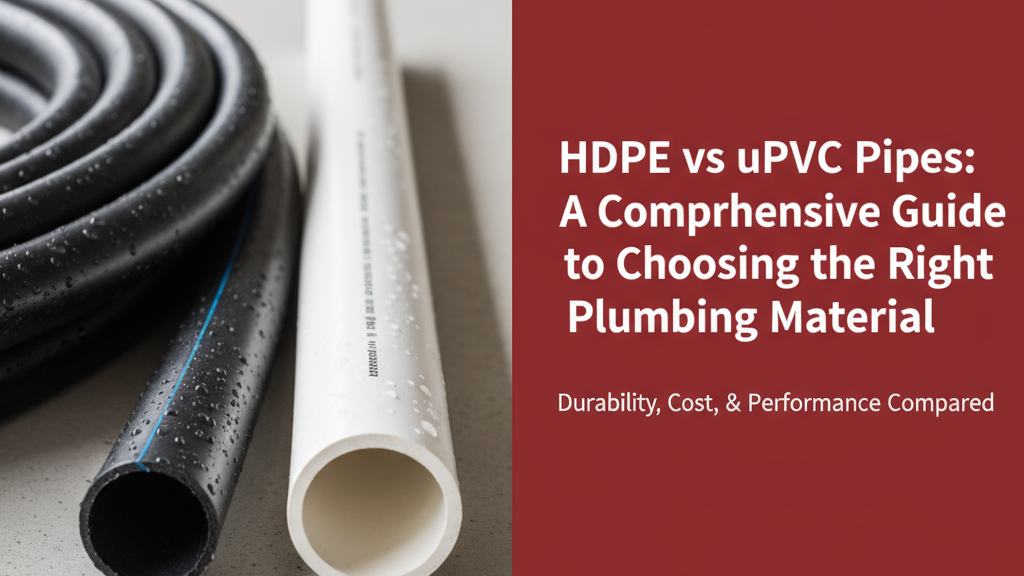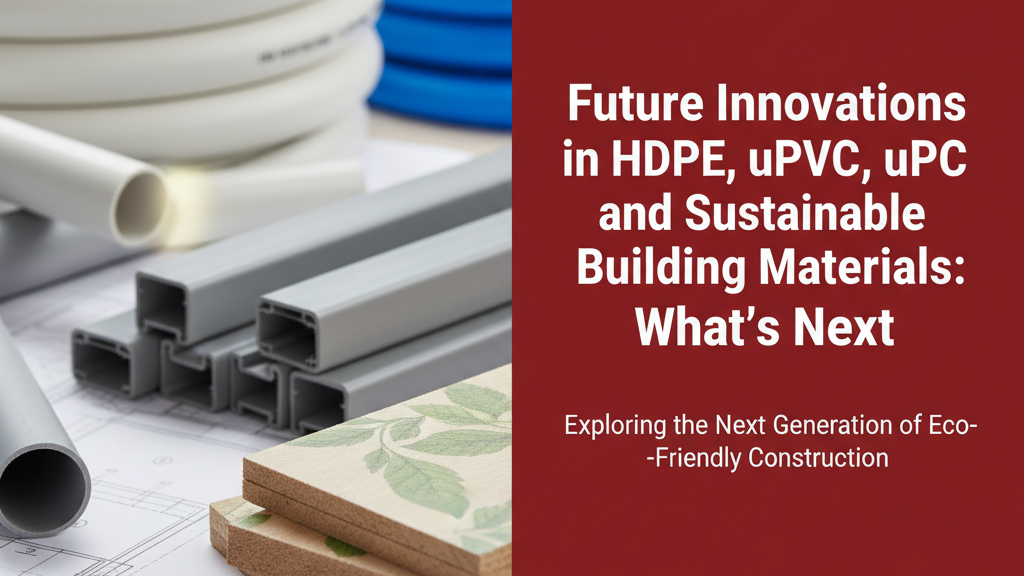Introduction to HDPE and uPVC Pipes
Modern plumbing relies heavily on plastic piping systems, with HDPE (high-density polyethylene) and uPVC (unplasticised polyvinyl chloride) being two of the most widely used materials in India. While both offer advantages over traditional metal or concrete pipes, they differ significantly in composition, performance, and ideal applications. Understanding these differences ensures you select the right pipe material for your specific plumbing needs.
Key Differences Between HDPE and uPVC Pipes
The fundamental difference lies in their material properties. HDPE is a flexible thermoplastic with high impact resistance, while uPVC is rigid and more brittle. This affects their:
- Installation methods (welding vs solvent cement joints)
- Thermal expansion behaviour
- Resistance to ground movement or vibration
Durability and Longevity
When properly installed, both materials offer long service lives (typically 50+ years) but under different conditions:
| Factor | HDPE | uPVC |
|---|---|---|
| Impact Resistance | Excellent (withstands handling/transport stresses) | Moderate (may crack if dropped) |
| UV Resistance | Requires stabilisers for outdoor use | Inherently UV-resistant |
Resistance to Chemicals and Corrosion
Both materials excel in corrosion resistance compared to metal pipes. HDPE handles a wider range of chemicals (pH 1-14) making it suitable for industrial effluent, while uPVC performs well in domestic water systems (pH 5-9) and resists bacterial growth better.
Temperature Tolerance
Critical for Indian climates where ground temperatures can exceed 45°C:
- HDPE: Softens above 60°C (suitable for cold water and buried applications)
- uPVC: Handles up to 80°C intermittently (better for hot water lines)
Installation and Maintenance
Each material requires specialised installation approaches:
Ease of Installation
- HDPE: Lightweight and flexible – allows trenchless installation with butt/electrofusion welding for leak-proof joints
- uPVC: Rigid pipes require precise cutting and solvent cement joints – simpler for small-scale plumbing
Maintenance Requirements
HDPE systems are virtually maintenance-free but require trained welders for repairs. uPVC systems may need occasional joint inspections but allow easier spot repairs.
Cost Comparison: HDPE vs uPVC
While material costs are comparable per metre, total project costs differ:
- uPVC typically has lower upfront costs for small residential projects
- HDPE becomes economical for large diameter/long runs due to lower labour costs and fewer fittings required
Environmental Impact and Sustainability
Both materials are recyclable:
- uPVC has higher recycling rates in India currently
- HDPE production has a slightly lower carbon footprint
- Both are more sustainable than metal alternatives when considering their full lifecycle
Best Applications for Each Pipe Type
When to Choose HDPE
- Underground water supply/distribution (flexibility prevents cracking during ground movement)
- Industrial wastewater systems (chemical resistance)
- Areas with high seismic activity
When to Choose uPVC
- Above-ground plumbing and drainage (dimensional stability)
- Hot and cold water pipes in buildings
- Situations requiring frequent modifications (easier to cut and join)
Conclusion: Making the Right Choice for Your Plumbing Needs
There’s no universal “best” pipe material – the optimal choice depends on project specifics. For buried pipes in harsh conditions, HDPE’s flexibility and chemical resistance often prevail. For structured above-ground installations, uPVC’s rigidity and thermal performance make it a practical solution. Consulting IS 4984 (HDPE) and IS 13592 (uPVC) standards can help verify a product’s suitability for your application.


